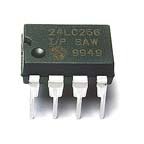
In this quick tutorial we will see how to program our arduino board with the help of an external programmer and not by using the arduino bootloader.
Before proceeding with this tutorial take a look at the "burn arduino with usb tiny" tutorial.
The first thing you have to understand is that by uploading a program with an external programmer you are going to lose your already burned bootloader on your ATMEGA chip.
So before proceeding make sure you can bootload your chips using your external programmer.
...continue reading "Programming arduino with an external programmer"


